Edward Sharp Prize
Awarded each year to outstanding works from the Creative Arts Degree show.
The prize is named for Edward Sharp, a Principal of Loughborough College of Art prior to its merger with the University. Prize-winning works are selected by a panel including the Dean of the School of Design and Creative Arts and the Director of LU Arts. On occasion, the winning artist may be commissioned to produce a new work for display on campus in addition to or rather than having their degree show work purchased.
Winning Works
2022
Georgie Gerrard (Textiles) - Six Locations: Durdle Door
Fired eucalyptus paper shreddings, wheat bran, barley straw, stoneware clay, reishi mushroom (Ganoderma multipileum), and oat seed spawn.
.jpg)
This remarkable sculpture is one in a series of eleven works that combine Georgie Gerrard’s interest in biomaterials with a personal interrogation of location, geology and family history. It’s bound together by mycelium, the root structure of fungi, a material with a wide range of potential applications in fields as diverse as construction, fashion, furniture, agriculture and pollution remediation. Gerrard is inspired by the potential environmental benefits of these applications, but is also fascinated by its aesthetic properties. Indeed, Six Locations: Durdle Door shows a real fidelity to mycelium’s visual and tactile character, down to the emergence of the mushrooms themselves from the top of the sculpture.
The sculpture’s form is inspired by Durdle Door, a natural limestone arch on the Dorset Coast. Gerrard’s grandfather was a geologist who frequented the area on field trips, and the substrate through which the mycelium has grown includes organic materials local to the location. The other sculptures in the series relate to further locations of importance for Gerrard’s family, and she conceives of the works as a ‘unified body of artefacts connected by the mycelium that permeates them.’
Making work from such organic materials is, of course, a highly experimental process. Working with a living material that responds to temperature, light, moisture and sterility levels means that, for Gerrard, ‘the aesthetic outcome was ultimately something I had little control over, allowing the materials to speak for themselves.’ The work’s colour derives in part from its materials, but has also been informed by the conditions in which the mycelium was grown and the sculpture was cured.
Jhuma Dutta (Fine Art) - Tapestry of Memories
Fabrics and shredded paper
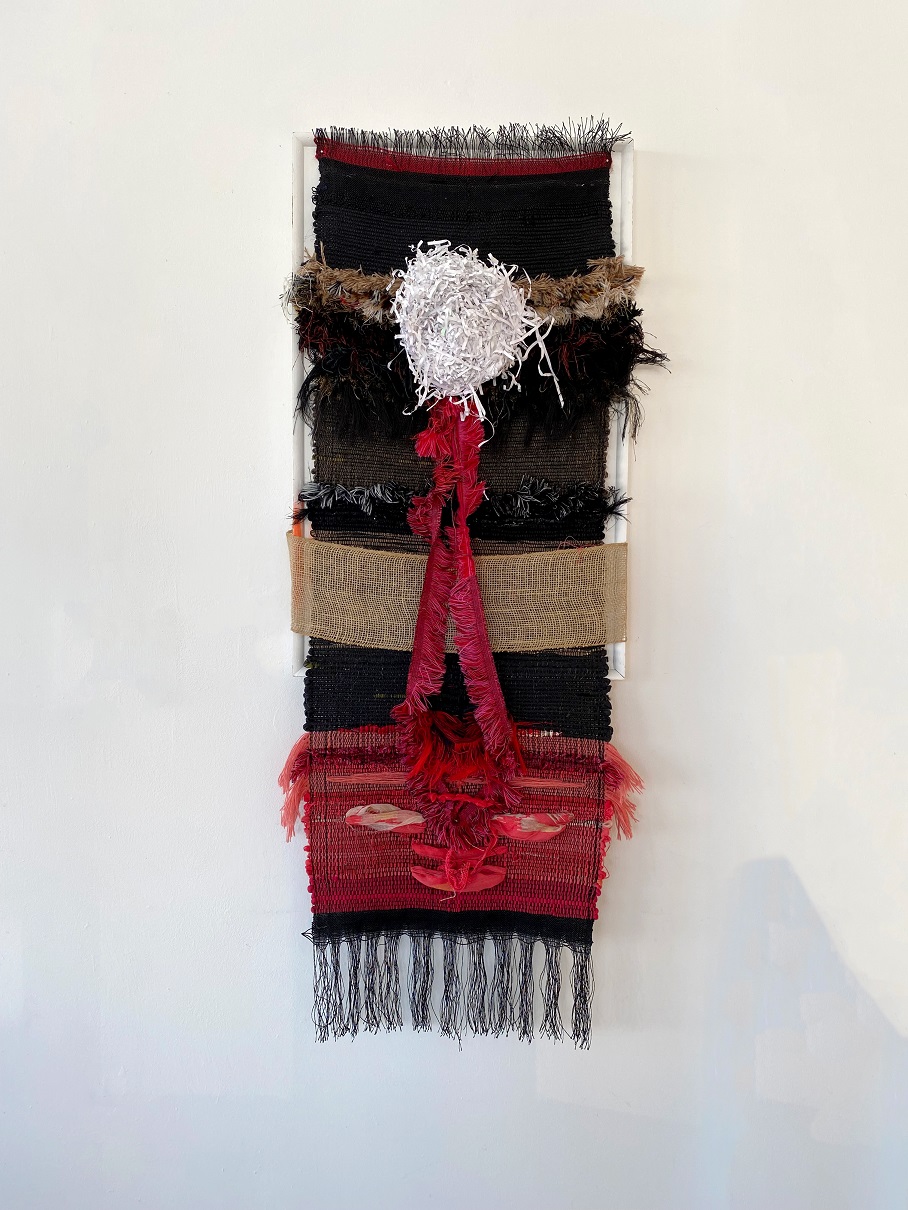
Tapestry of Memories is an interrogation of the loss, dislocation and interactions of the migrant experience; a telling of what Dutta calls her ‘diasporic silent story.’ The warp and weft of the woven fabric (discarded offcuts from the University’s textile workshops) are a materialisation of Juma’s prayers, weaving together her homeland, family and life in Loughborough. Memories constantly weave in and out of the present; the decades and miles traversed in a lifetime brought together in a single action.
Although a highly personal work, the work’s shredded paper is a reference to the thousands of documents that can often be found in rubbish bags outside Loughborough’s property agencies. In this, Dutta connects her own experiences with those of people facing uncertainty in today’s housing market.
The result is a defiant work that refuses to simply mourn. ‘I am silent about my loss’, Dutta says, ‘but celebrate my memories through my art practice.’
2021
Sara Osman (Fine Art) - Syria
Oil and polyfilla on board
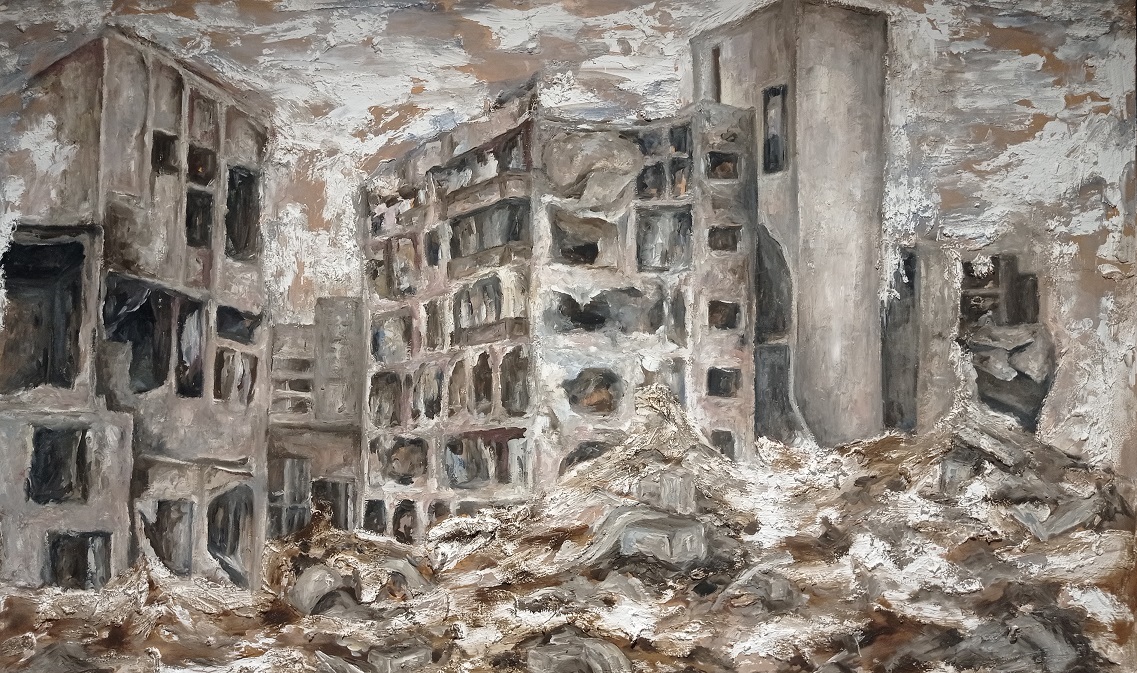
A striking, highly textured work by depicting ruined buildings in the city of Homs, Syria functions as a powerful standalone work depicting the aftermath of violence in an everyday city environment. It was originally produced as part of an architectural installation titled Far From Home III, which combined these concerns with Osman's reflections on internal struggles with grief, loneliness and anxiety as a Turkish-Cypriot woman. The work is hung in the Edward Herbert Building's main corridor.
Eleanor Shillitoe (Textiles) - Interval II
Silk and copper
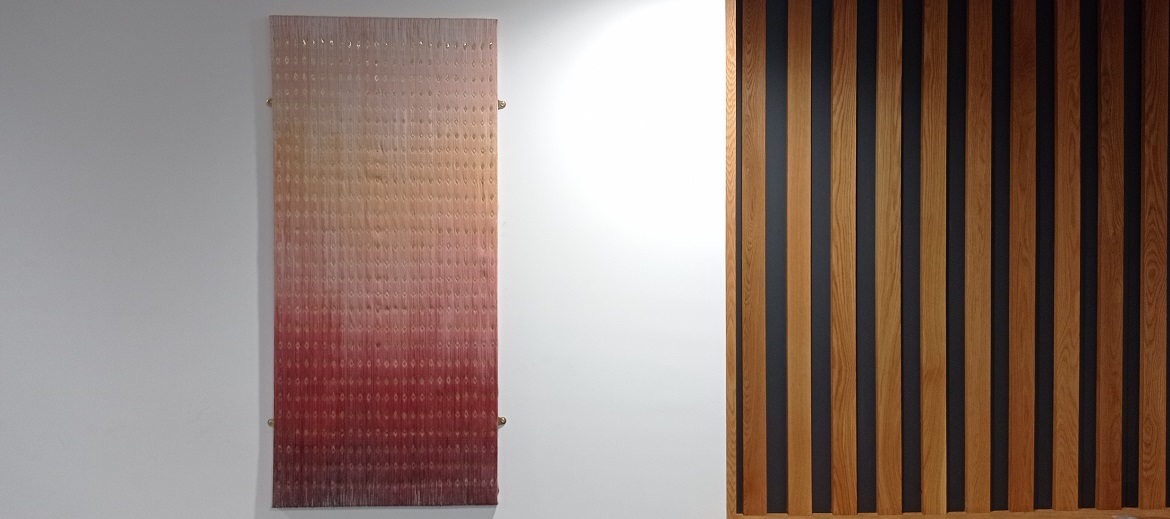
One of a series of three 'woven paintings' inspired by the National Memorial Arboretum in Alrewas, Staffordshire. Shillitoe used deeply coloured hand-painted silk to produce a poignant, reflective quality that changes with the light and viewing angle, with copper added to the silk ground as a reference to the monuments found within the Arboretum. The work hangs in the main corridor, EHB.
2020
Nadine Wilde (Textiles) - Kaleto (Fortress)
Oil and polyfilla on board
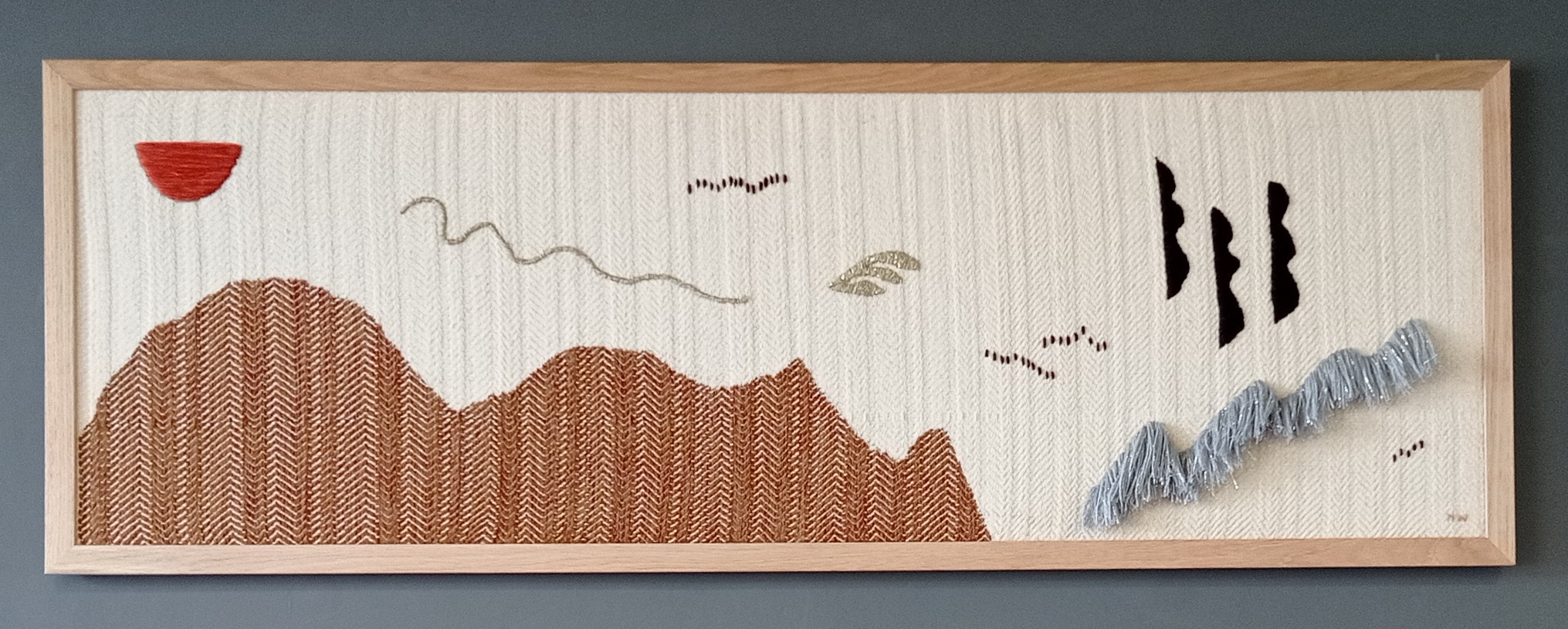
Nadine Wilde won the Edward Sharp prize for her 'Modern Ways' collection, which utilised textiles and objects as a prompt for communal storytelling. Rather than purchase one of the works from this collection, it was decided instead to commission a new work to be hung in the recently refurbished Martin Hall Café, a location Wilde frequently visited during her time at the University. 'Kaleto (Fortress)' was produced after Wilde, who is half Bulgarian, had spent time with weavers in Chiprovisti, a Bulgarian town where traditional weaving methods are still practiced. Its form is inspired by the nearby Kaleto Fortress and Belogradchik Rocks.
Alyssa Dabbs (Fine Art) - To the Depths
Oil on canvas
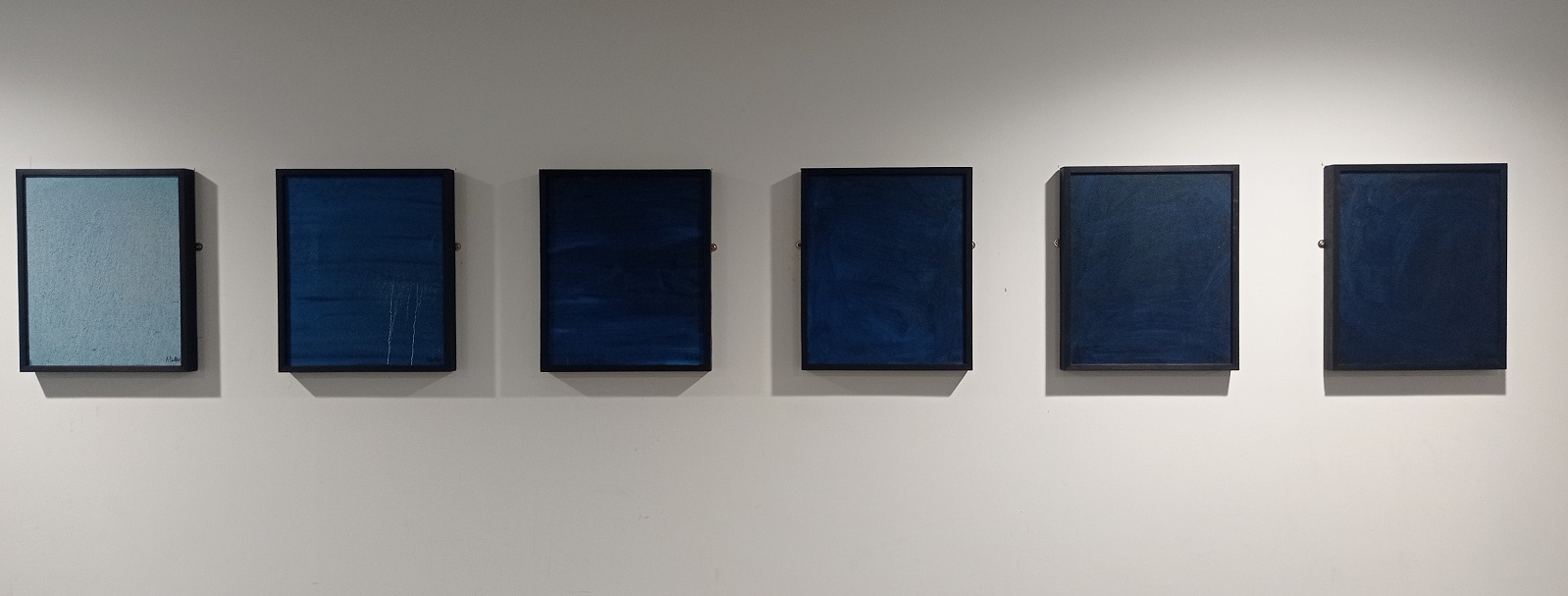
Alyssa Dabbs won the Edward Sharp prize for a collection of abstract paintings titled 'Transcendental'. As these had already been sold, the University chose to buy this set of six small canvases from her. Each is painted in an increasingly dark blue, giving the viewer the impression of a descent underwater. They hang together in EHB's main corridor.
Lauren Jefferis (Graphic Communication & Illustration) - Campus Sculpture Map
Digital illustration
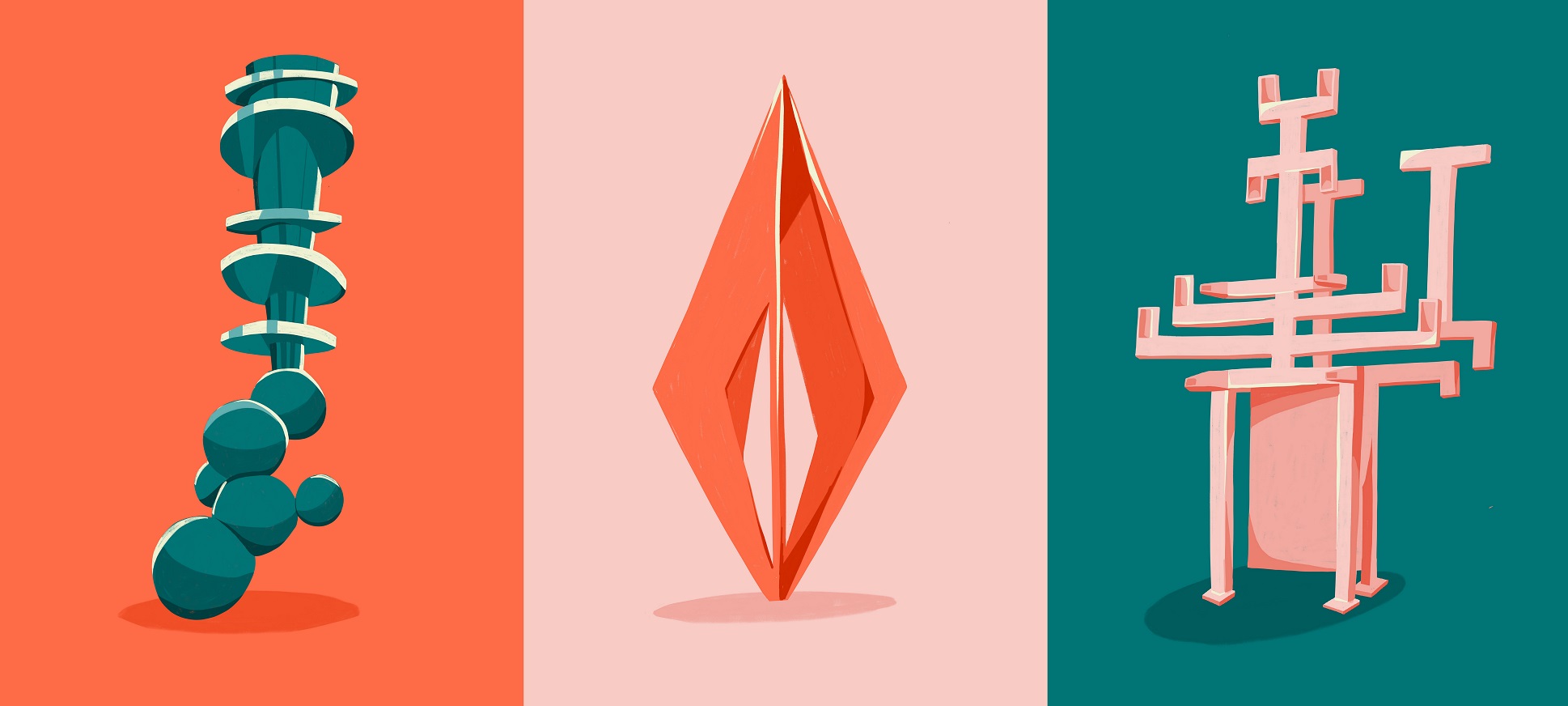
Lauren Jefferies won the Edward Sharp Prize for her project 'The Poisons of Agatha Christie', an interactive graphic experience proposed for Agatha Christie's website, allowing fans to explore the poisons featured in her novels. As this work couldn't be purchased, LU Arts commissioned Jefferies to produce an illustrated map of the University's sculpture collection, which will be available soon. Three details from the map are shown above.
2019
Da Hyoung Choi (Fine Art) - The Same Area 19 Days Later, Mercure Hotel in Aden, Yemen
Oil on canvas
.jpg)
This painting’s dynamic power comes from two tensions: between preservation and destruction, and between representation and abstraction. Its form draws on the ambiguities found in the supposedly exact rules of perspective developed by Renaissance artists, and these are applied to create a depiction of Aden's Mercure Hotel, heavily damaged by airstrikes in 2015. Subsequent to purchase, the work was loaned to London’s Mall Gallery for FBA Futures 2020, an exhibition the showcasing new figurative painting, drawing, sculpture and printmaking by outstanding art graduates from the previous year. It now hangs in the main corridor of the Edward Herbert Building (EHB).
Kate Dixon (Textiles) - The Same Area 19 Days Later, Mercure Hotel in Aden, Yemen
Seven-layered screen print on rubber
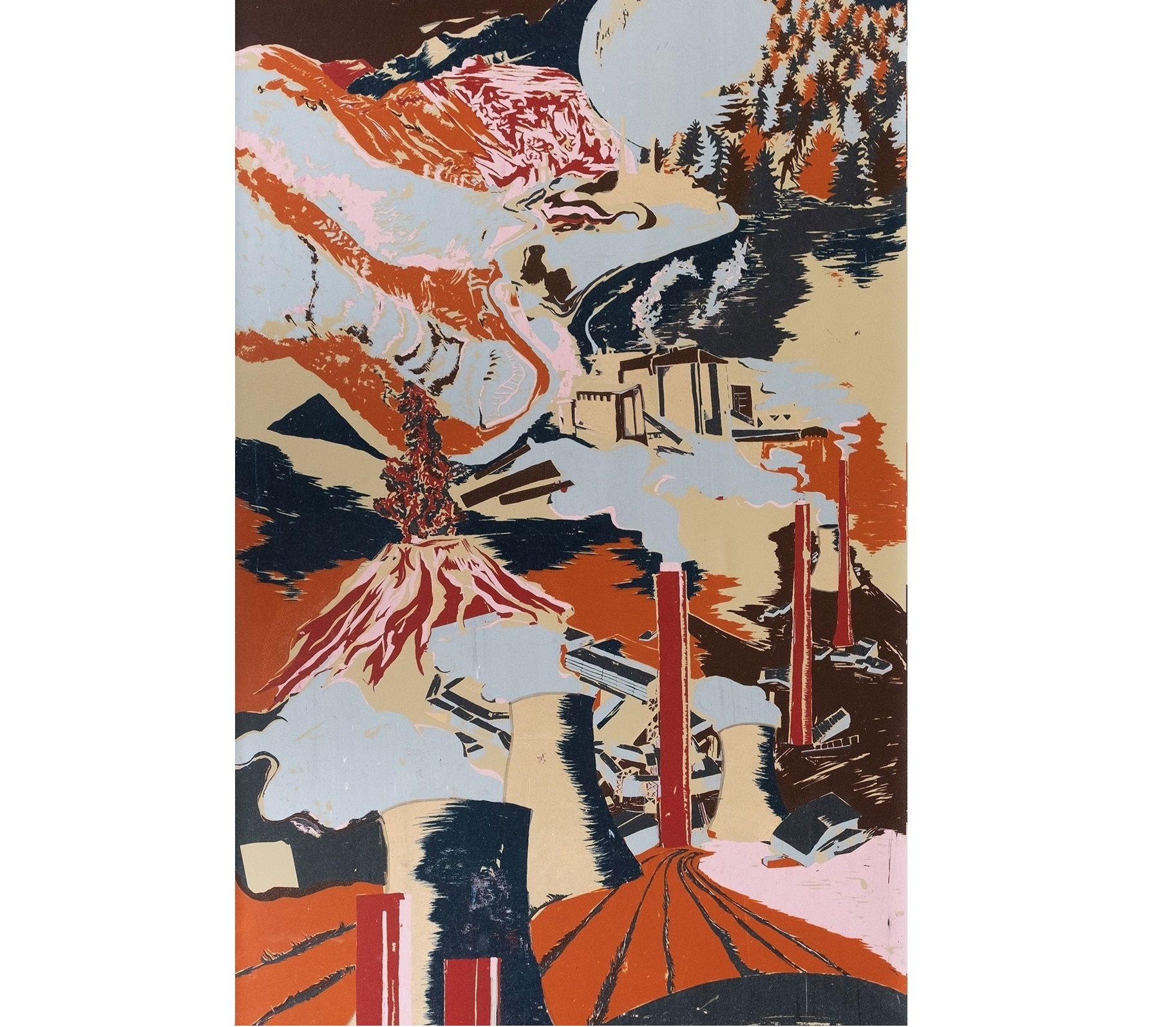
This print formed part of a dynamic range of works exploring pollution, climate crisis and resistance. With its striking colour palette and compositional power, the work makes quite the statement hanging in the main corridor of EHB.
2018
Jodie Cowler (Fine Art) - Blessed be the Raptor
Oil on canvas
.jpg)
This powerful yet playful painting is one of a series of seven. Informed by stained glass window design, each of the works represented a day in an alternative story of creation. It hangs in the West Grove Corridor of Harry French Hall: please ask at their reception for access (we advise checking their opening times by calling ahead on 01509 238093).
Rebecca Wymark (Fine Art) - Untitled (Fabric, String, Paper and Other Things)
2x Prints on paper
 Two Together.jpg)
Rebecca Wymark's multilayered prints are made with fabrics and threads stripped from everyday objects. They have an elusive, tactile quality that draws the viewer in, prompting reflection on domestic materials. The works hang together in the eastern stairwell of Martin Hall.
2017
Lydia Ward-Manners (Textiles) - Bus Seat
Reupholstered bus seat
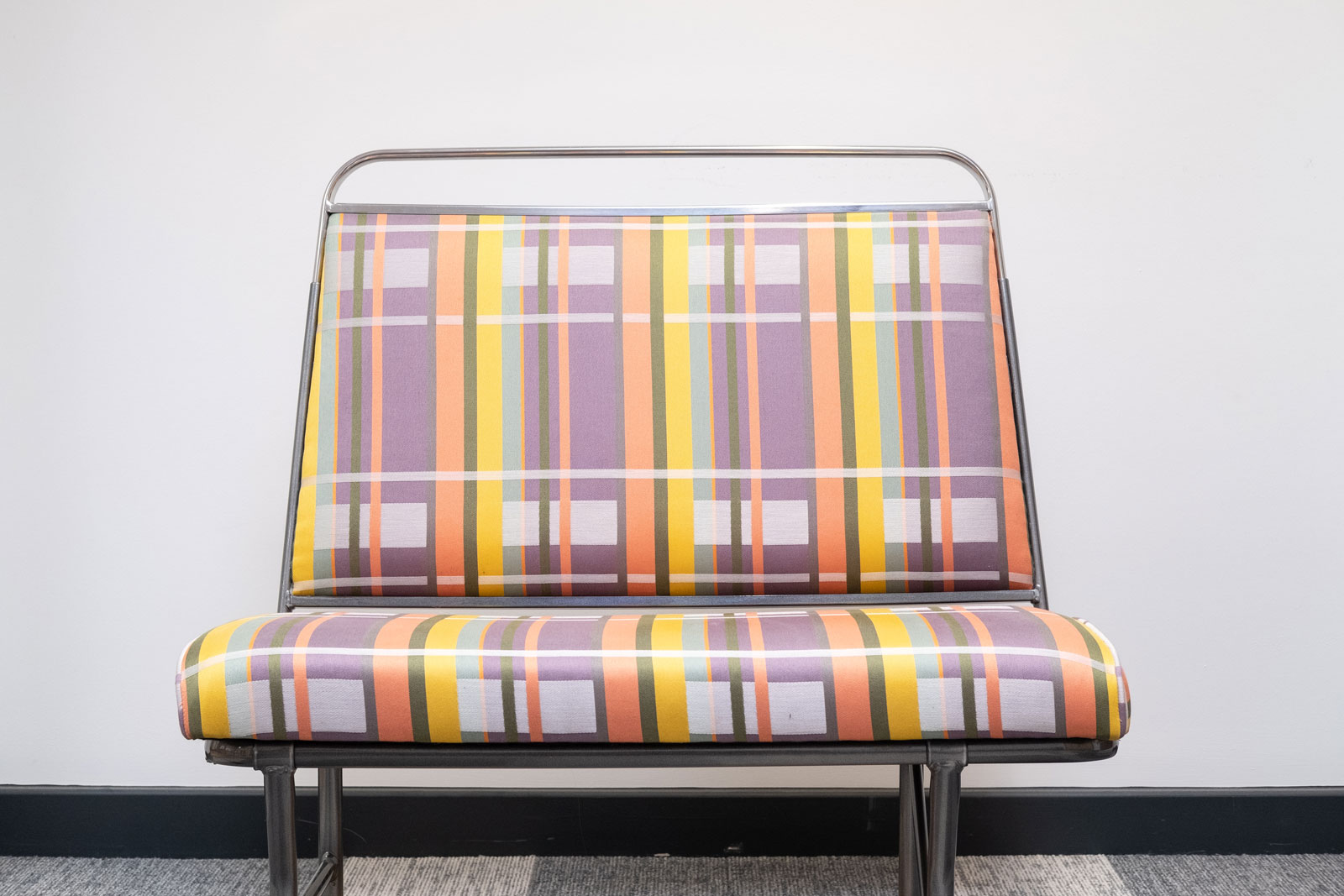
This strikingly reupholstered bus seat can be found in the foyer area outside the main office in Martin Hall. Ward-Manners was inspired by the linear forms found untraditional moquette seat coverings used on public transport, and produced her own variation using a contemporary colour palette.
Earlier Winners
2015: Alice Cox, Matteo Allodi and Hannah Refaat
2014: M. T. Andrés and Vanessa Lewis-Jones
2013: Ian Tricker
2012: Simon Hall, Nicola Thornhill and Roseanna Woods
2011: David Lawton
2010: Deborah Aves and Vanessa Raw
2009: Jess Harries-Wood, Ali Lomas and Louisa Hollingsworth